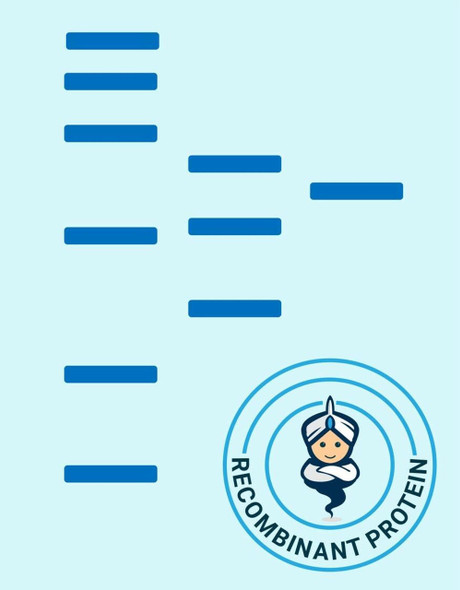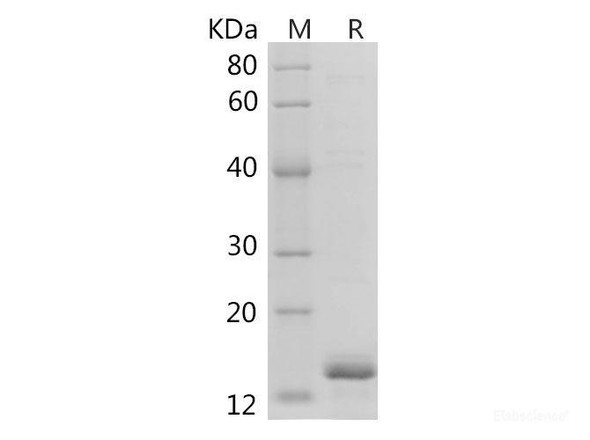Mouse Galectin-3/Lgals3 Recombinant Protein (His Tag) (RPES6751)
- SKU:
- RPES6751
- Product Type:
- Recombinant Protein
- Species:
- Mouse
Frequently bought together:
Description
| Product Name: | Mouse Galectin-3/Lgals3 Recombinant Protein (His Tag) |
| Product Code: | RPES6751 |
| Size: | 20µg |
| Species: | Mouse |
| Expression Host: | E.coli |
| Synonyms: | 35 kDa lectin,Carbohydrate binding protein 35,CBP35,GAL3,GALBP,GALIG,GBP,Gal-3,IgE binding protein,LGALS2,Macrophage galactose-specific lectin,Lectin L-29,Mac-2 antigen |
| Application: | Immunogen |
| Mol Mass: | 27.4 kDa |
| AP Mol Mass: | 31-33 kDa |
| Tag: | N-His |
| Purity: | > 90 % as determined by reducing SDS-PAGE. |
| Endotoxin Level: | Please contact us for more information. |
| Bio Activity: | Immunogen |
| Sequence: | Ala2-Ile264 |
| Accession: | P16110 |
| Storage: | Generally, lyophilized proteins are stable for up to 12 months when stored at -20 to -80°C. Reconstituted protein solution can be stored at 4-8°C for 2-7 days. Aliquots of reconstituted samples are stable at < -20°C for 3 months. |
| Shipping: | This product is provided as lyophilized powder which is shipped with ice packs. |
| Formulation: | Lyophilized from sterile PBS, pH 7.4. Normally 5 % - 8 % trehalose, mannitol and 0.01% Tween80 are added as protectants before lyophilization. Please refer to the specific buffer information in the printed manual. |
| Reconstitution: | Please refer to the printed manual for detailed information. |
| Background: | Galactose-specific lectin which binds IgE. May mediate with the alpha-3, beta-1 integrin the stimulation by CSPG4 of endothelial cells migration. Together with DMBT1, required for terminal differentiation of columnar epithelial cells during early embryogenesis. In the nucleus: acts as a pre-mRNA splicing factor. Involved in acute inflammatory responses including neutrophil activation and adhesion, chemoattraction of monocytes macrophages, opsonization of apoptotic neutrophils, and activation of mast cells. Together with TRIM16, coordinates the recognition of membrane damage with mobilization of the core autophagy regulators ATG16L1 and BECN1 in response to damaged endomembranes. |










